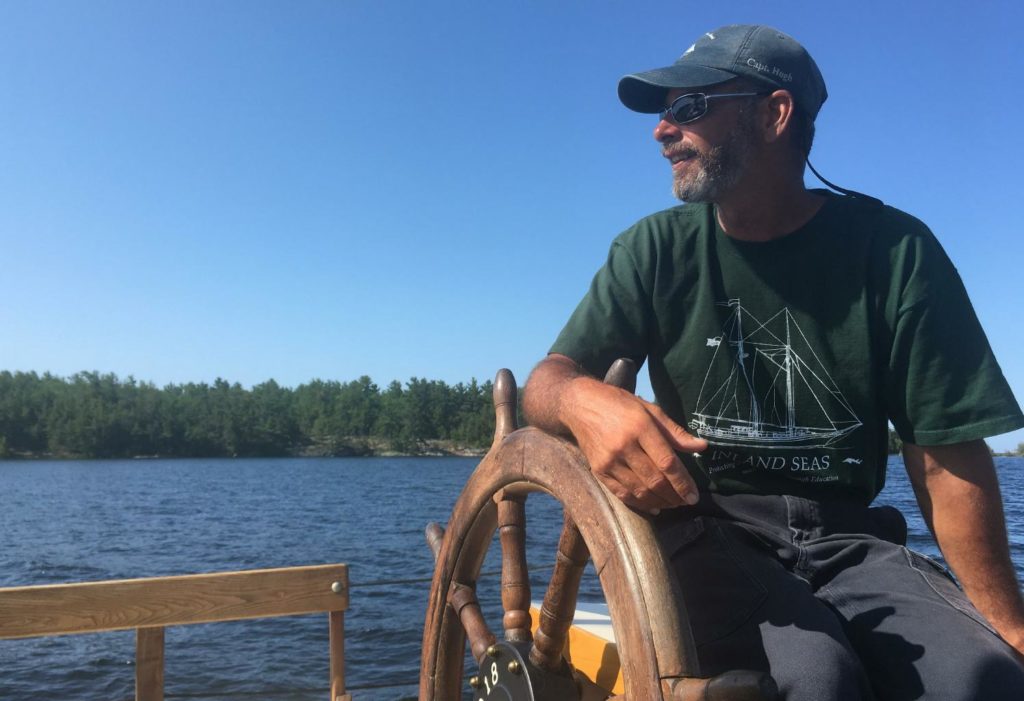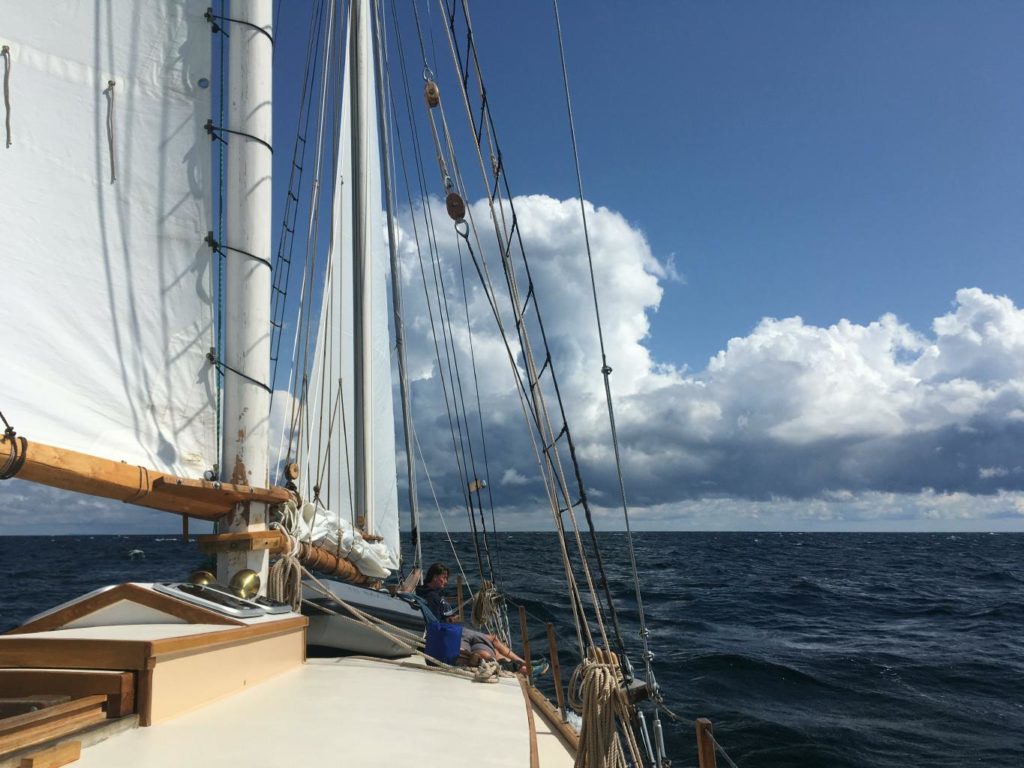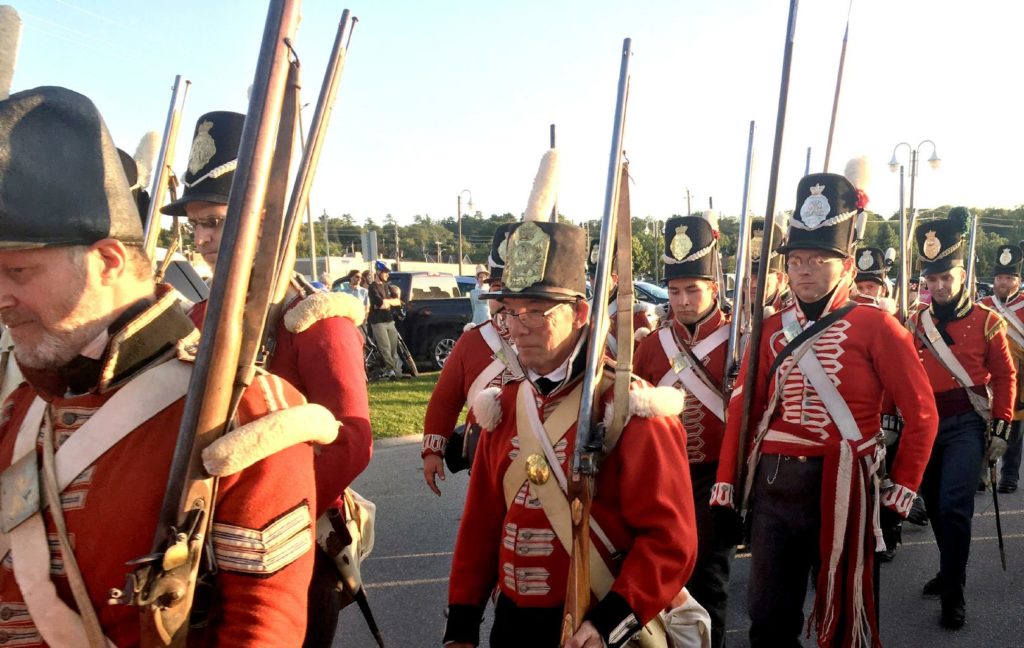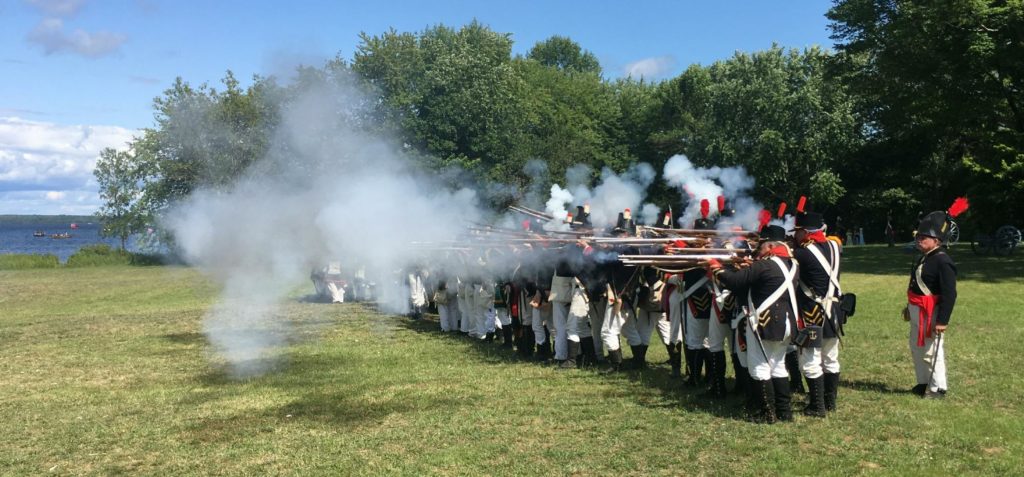War of 1812
From 1812 to 1814, America and Britain fought for control of the Great Lakes. Georgian Bay, on the east side of Lake Huron, was the site of one of Britain’s key military shipyards and supply depots. Several decisive land and sea battles occurred here.
With colorful uniforms, fife and drum corps, cannons, muskets, bows, tomahawks and tall ships, the War of 1812 is popular for re-enactments, I was honored and delighted (!) to be invited to crew on the Schooner Huron Jewel and to re-enact some of the battles of Georgian Bay.

With a crew of eight, we cast off from Drummond Island on August 6th. Under sunny skies, we motor-sailed east and then south through the North Channel into Georgian Bay.

On our way south, we anchored in natural bays surrounded by granite cliffs and dark forests. After delicious suppers, we enjoyed refreshing sunset swims in crystal clear waters.

We had two days of smooth sailing followed by one morning of hard rain and 2-meter swells. The Huron Jewel, with its solid, all-wood hull and Captain Hugh at the wheel, rode confidently through the waves. In all, it took three full days to cover the 200+ miles to Discovery Harbour at the south end of Georgian Bay.

Our ship was to be one of eight tall ships participating in sea battles near Midland, Ontario. On arrival at Discovery Harbour, I was photographed for the local newspaper. (Click here for the full article.) For my period costume, I wore a 19th century trade shirt and a Pakul hat which was given to me in Pakistan. The hat seemed to go with the shirt. Spectators assumed that I was a cook … which was close to the truth: When I wasn’t raising sails or swabbing the deck, I was the assistant dishwasher.

There were about 800 re-enactors — both British and American. They came from all over Canada and the US. The re-enactors spend their summers traveling from one historic battlefield to another — often with their families — re-enacting battles from the 18th and 19th centuries. They take their uniforms, weapons and drills seriously.

They sleep on wooden cots in canvas tents, cook their meals over open fires, use candles and kerosene lamps at night, and stay in costume and in character for the entire weekend for the benefit of the tourists who come to see the show.

Each day, there were two or three land battles. Although there were no bullets in the muskets or balls in the cannons, lots of black powder was used. Consequently, the battles had the authentic sounds and smells of 19th century warfare.

Each afternoon, there was a ship battle. As in the original marine conflicts, the biggest challenge was maneuvering these huge sailing ships in narrow bays and close quarters. How this was accomplished in the early 19th century under sail was a feat of superb seamanship. Fortunately, we had the advantage of diesel engines.

The largest of the tall ships was The Pride of Baltimore. It was reassuring to have her 10 canons on “our” side. Note her 15-star American flag. That’s how many stars were on Old Glory in 1812 after Vermont and Kentucky were added to the original 13 states.

On one ship, the cannon firing was accompanied by bagpipe music. Charming!

This was my first experience taking part in a military re-enactment, Although I don’t plan to become a weekend warrior, I was impressed by the dedication and commitment of the re-enactors I met. What a great way to live and learn history!
After our weekend in Discovery Harbour, we took our time sailing home to Drummond Island. There were three more beautiful starry nights anchored in sparkling clear waters. It was all good sailing practice. I’m ready now for my next sea adventure.


First asst dishwasher!!! Haha. I loved reading about this adventure, Nick. I hope visiting you kids was great fun and you created some good memories together.
Good wishes for safe sailing!
😊 Josie